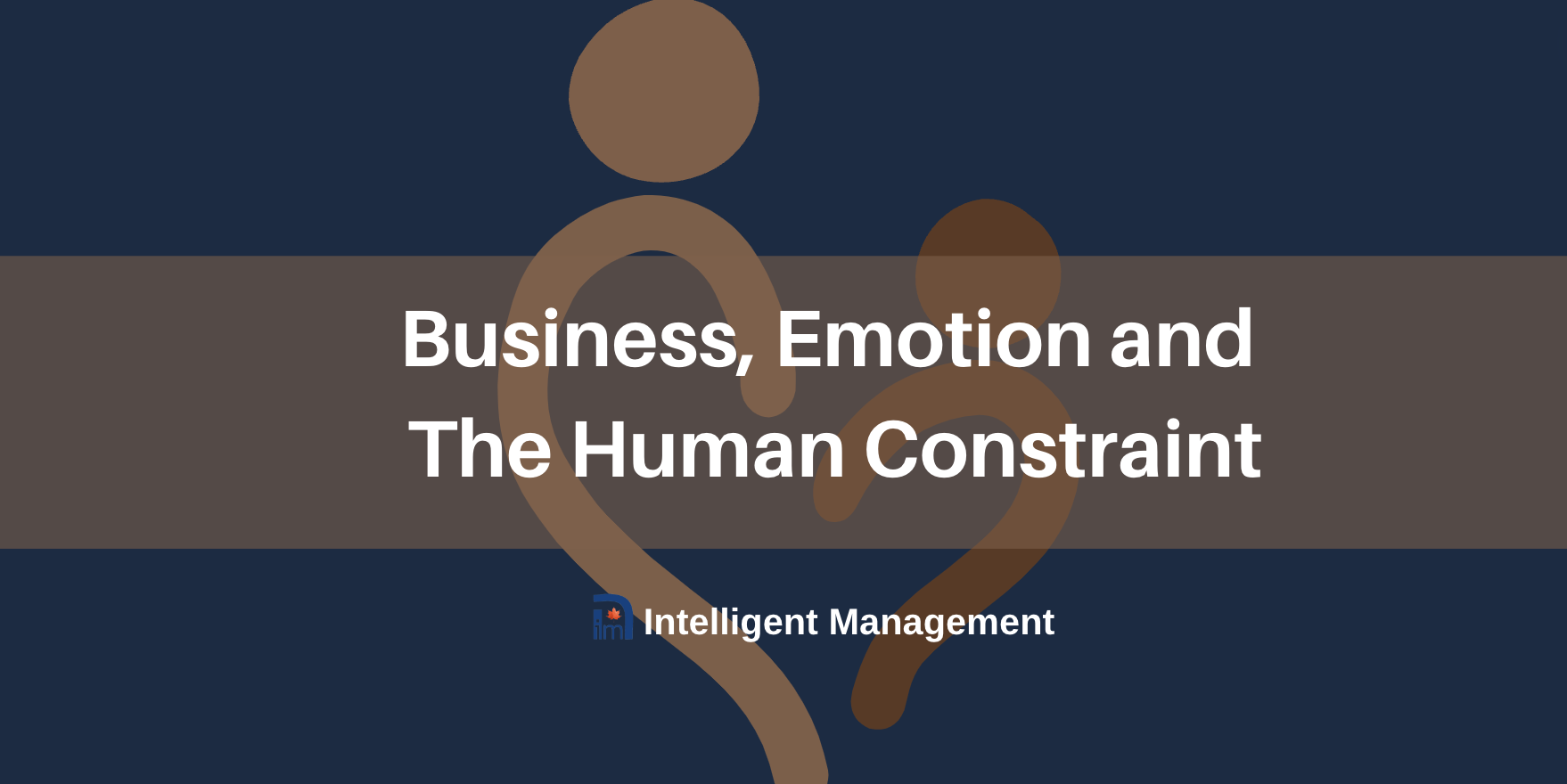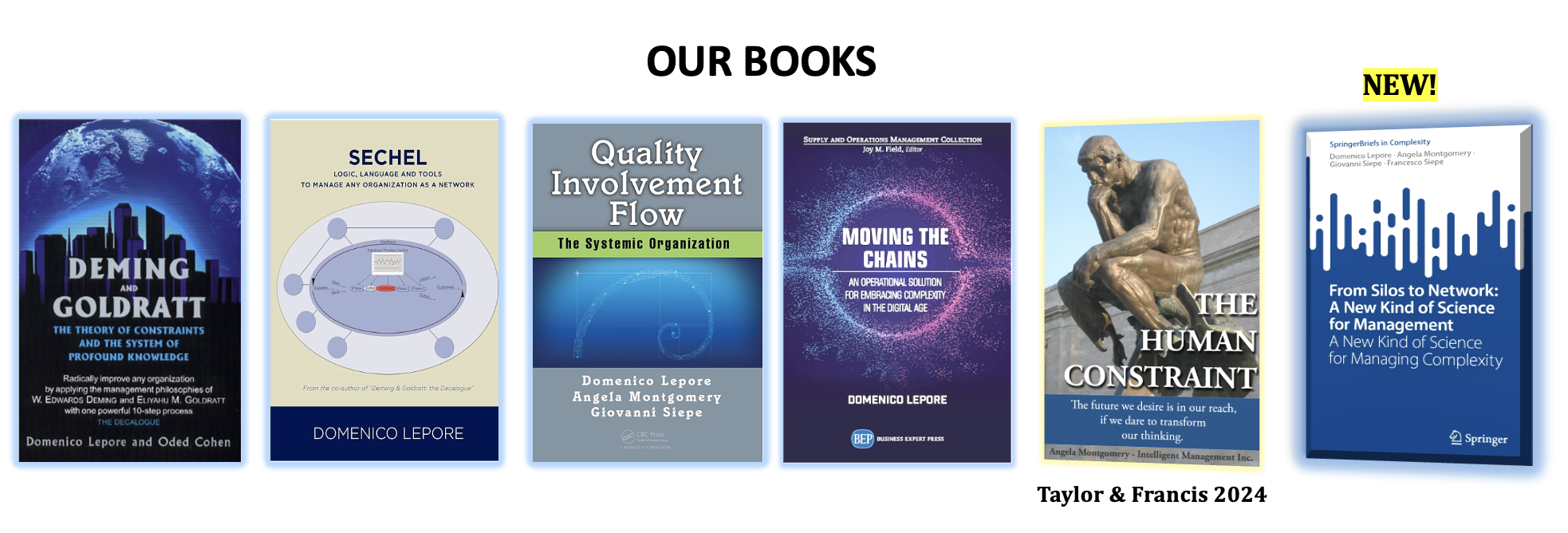 It’s been a while since our last post. We’ve been concentrating our writing efforts elsewhere and we are very happy to announce that ‘The Human Constraint’ that started out as an online project, downloaded in 43 countries around the world, will be published this year by a major publishing house, Taylor & Francis (Routledge).
It’s been a while since our last post. We’ve been concentrating our writing efforts elsewhere and we are very happy to announce that ‘The Human Constraint’ that started out as an online project, downloaded in 43 countries around the world, will be published this year by a major publishing house, Taylor & Francis (Routledge).
Here, co-founder Angela Montgomery takes the opportunity to introduce the new book.
The writing dilemma
Ever since ‘Deming and Goldratt: The Decalogue’ by Lepore and Cohen, we have continued to develop the methodology in the field in increasingly complex environments and to share our work and discoveries through papers, articles, chapters, blog posts, podcasts and full length books. We have always felt that it was our responsibility to make the knowledge available for others.
While we come from very solid academic backgrounds, we are not academics, so writing a book is always a difficult choice because it takes time away from our activity as a business. Writing a novel is an even greater challenge because it requires a creative effort that is not required in non-fiction. So why would a boutique consulting firm invest considerable time and effort in producing a novel? For several reasons.
Going beyond ‘The Goal’ and ‘It’s Not Luck’
Dr. Goldratt chose the business novel as a format to communicate the Theory of Constraints, alongside the non-fiction books ‘What is This Thing Called the Theory of Constraints’ and ‘The Haystack Syndrome’. His best-selling book ‘The Goal’, followed by ‘It’s Not Luck’ are not just stories; they fictionalize case histories. As the only non-scientist in Intelligent Management, I felt it would be worthwhile to follow Dr. Goldratt’s example. My background in literature and my PhD research work in Literature and Science prepared me for this boundary-crossing challenge. I felt that there were some major case histories of the Decalogue method that lent themselves to narrative form. These case histories also provided the opportunity to go beyond ‘The Goal’ and ‘It’s Not Luck’ and write about implementations of a Deming and Goldratt based approach to management that encompassed all the systemic solutions from the Theory of Constraints.
Inevitably, the Thinking Processes developed by Dr. Goldratt recur throughout the story but I didn’t want to slow down the narrative with explanations of them. To avoid that, I have written about the Thinking Processes with some detail in a dedicated section that comes after the story. As I had only written one novel before this, I wanted to make sure that the story would be fast-paced enough to keep the reader interested. Thanks to a project carried out in America, I had the good fortune to meet renowned playwright and screenwriter, Donald Freed who agreed to mentor me throughout the writing of the novel.
Fundamental equations
It has been very important for us over the decades to demonstrate that the Theory of Constraints is not a technique. Dr. Goldratt was a physicist and our founder is also a physicist. This means that both of them shared an educational background that trained them to always search for the fundamental equation of something. Fundamental equations are such because they account for a multiplicity of specific phenomena. The most famous example of this is E = mc2. It provides the key to understanding the most basic natural processes of the universe, from microscopic radioactivity to the big bang. Achieving this depth of understanding gives you the confidence to interpret specific situations and find a solution. We have always tried to communicate that the Theory of Constraints, when properly understood, provides universal solutions for managing organizations as whole systems. Our resources are not infinite and so the more we can achieve with them the better. The Theory of Constraints helps us to achieve so much more with the resources we have available, including our intelligence. The narrative form of ‘The Human Constraint’ provided me with the opportunity to illustrate how this is possible in very different situations and environments. Storytelling also allowed me to give some insight into the emotional toll and rewards of this kind of work that no Executive Summary ever could.
The wisdom of the heart
I began my career in the arts. Back then, I thought that business, unlike art, was something lacking in an emotional and spiritual dimension and removed from who we are deep down as people. I was wrong.
Whatever people may believe, we cannot separate our emotional, or indeed, our spiritual selves from our work or business selves. Moreover, we have evolved and people yearn for personal, not just career development. I believe we can work towards both when we learn to develop “intelligent emotions”. In other words, by learning to channel emotions in a positive and constructive direction. The Thinking Processes from the Theory of Constraints that recur through ‘The Human Constraint’ help us achieve this. It is quite misleading to refer to them as “logical thinking tools”; as Dr. Goldratt stated in a private conversation with Dr. Domenico Lepore, they are based on the logic of Talmudic thinking that predates scientific thinking by millennia. If there is at least one thing I would like readers to take away from ‘The Human Constraint’ it is the curiosity and desire to learn more about these remarkable Thinking Processes and how they can enhance their business and their lives.
To find out more about ten guided steps to a systemic leap ahead for your company, contact Angela Montgomery at intelligentmanagement@sechel.ws
SCHEDULE AN INTRODUCTORY CALL WITH US
Intelligent Management works with decision makers with the authority and responsibility to make meaningful change. We have helped dozens of organizations to adopt a systemic approach to manage complexity and radically improve performance and growth for 25 years through our Decalogue management methodology. The Network of Projects organization design we developed is supported by our Ess3ntial software for multi-project finite scheduling based on the Critical Chain algorithm.
See our latest books: From Silos to Networks: A New Kind of Science for Management from Springer, Moving the Chains: An Operational Solution for Embracing Complexity in the Digital Age by our Founder Dr. Domenico Lepore, and ‘Quality, Involvement, Flow: The Systemic Organization’ from CRC Press, New York by Dr. Domenico Lepore, Dr. .Angela Montgomery and Dr. Giovanni Siepe.





Leave a Reply